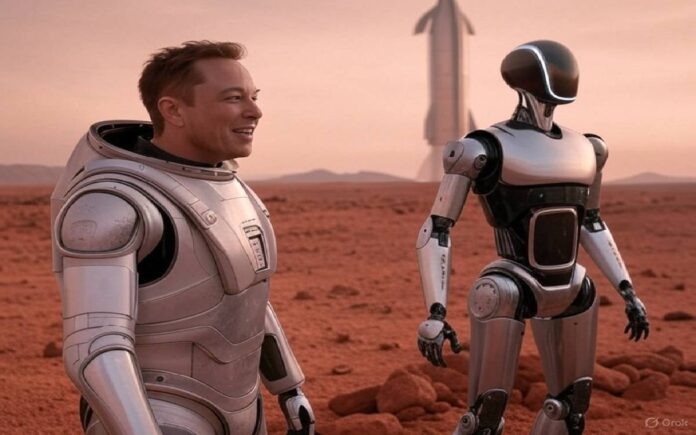New York: SpaceX CEO Elon Musk has announced that the company’s revolutionary Starship rocket could make its first journey to Mars by the end of 2026, carrying with it a payload of Optimus explorer robots—Tesla’s humanoid machines designed for exploration and assistance in challenging environments.
In a post on X, Musk stated, “Starship will hopefully depart for Mars at the end of next year with Optimus explorer robots”. The bold statement comes on the heels of renewed momentum in the U.S. space program, as the Biden administration’s nominee to lead NASA emphasized a dual focus on Moon and Mars exploration, reaffirming the goal of putting American astronauts on the Red Planet.
Starship will hopefully depart for Mars at the end of next year with Optimus explorer robots! https://t.co/8dzlxzFg0h
— Elon Musk (@elonmusk) April 10, 2025
SpaceX’s Starship Super Heavy system, which is being developed as a fully reusable spacecraft for deep space missions, is currently progressing through its rigorous testing phase. The ninth test flight is expected in the coming weeks, aimed at demonstrating critical capabilities such as engine relighting in space and a precision landing—key milestones toward Mars readiness.
The Super Heavy booster, a central part of Starship’s launch system, has already successfully landed twice following launches, marking significant progress in SpaceX’s mission to perfect rapid reusability—an essential factor in cost-effective interplanetary travel.
Elon Musk has been clear about his vision: Starship is not just a spacecraft, but a cornerstone in humanity’s journey to becoming a multi-planetary species. He has shared plans for up to five uncrewed Starship missions to Mars within the next two years, targeting launches during upcoming Earth-Mars transfer windows—periods when planetary alignment makes interplanetary travel more efficient.
Traditionally, travel to Mars has taken six to nine months, but Musk believes this can be drastically reduced. With advanced propulsion systems and optimized flight paths, he claims Starship could complete the journey in as little as 90 days—a game-changer for long-duration spaceflight.
Musk envisions Starship as a versatile spacecraft capable of transporting both humans and cargo not only to Mars, but also to the Moon and other celestial destinations. The inclusion of Tesla’s Optimus robots in future missions signals SpaceX’s intent to prepare Mars for human arrival by deploying robotic explorers capable of conducting early-stage exploration, construction, and support tasks.
As excitement builds around the next generation of space travel, all eyes remain on SpaceX as it inches closer to making interplanetary exploration a reality.



